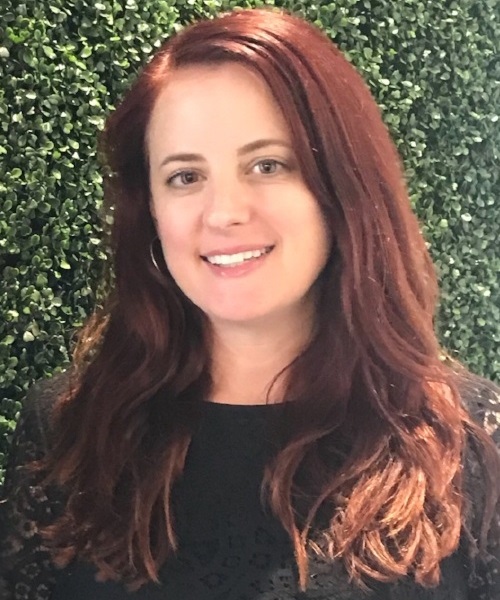OAKLAND, Calif. — The transition to remote learning wasn’t all bad for 17-year-old high school junior Andalon Ansari. Sometimes, he found it easier to focus in his bedroom with his laptop than in the classroom. He’s autistic and was a freshman in an Oakland, California, high school when his classes went online because of the COVID-19 shutdowns in 2020.
But after a few months of online classes, Andalon stopped logging on, his mother, Lilian Ansari, said.
“I don’t really know what happened — maybe it was Zoom fatigue,” she said. “Whatever it was, he was done.”
Both Ansari children have special needs. The family decided to make their children’s mental health the priority, Lilian Ansari said, and deprioritized online schooling. Andalon had lost a year of schooling by the time classes resumed.
Students with identified disabilities like Andalon are entitled to a free and appropriate public education under the Individuals with Disabilities Education Act. The appropriate services are identified in an Individual Education Plan (IEP) and can include accommodations like an in-classroom aide, speech and occupational therapy and special classes that offer a small-group setting where students get individualized help with learning.
For the Ansari family, that meant 23 health-care, behavioral and educational specialists came to the house on a weekly basis before the pandemic. The support stopped abruptly in March 2020.
“We went from that to just me trying to do everything,” Lilian Ansari said.
Andalon lost a crucial year of development, his mother said. There is no way to recapture the time her children missed, especially because their day-to-day schooling is already so intensive, she said.
“By the time they get home, they’re exhausted,” Lilian Ansari explained. “They’ve had a very, very long day. They just want to be home.”
Test scores plunge for students with disabilities
Scores on the National Assessment of Educational Progress, often called the nation’s report card, recently quantified just how much students had fallen behind academically during the pandemic.
“We have a whole generation of students whose academic careers were knocked off track,” said Peggy Carr, commissioner of the National Center for Education Statistics. “This is not to be taken lightly.”
Learning loss among students with an identified disability also showed an even sharper decline. Math scores for 9-year-olds with a disability dropped 9 points, compared to a 7-point drop for students without an identified disability. Reading scores for 9-year-olds dropped 7 points for kids with disabilities and 5 points for those without an identified disability.
“Online learning was not beneficial to anybody, but it was especially difficult for special needs students because they are the ones that, more than anybody else, require in-person instruction,” explained Daniel Domenech, the executive director of the American Association of School Administrators.
Megan Bacigalupi, whose 9-year-old son has dyslexia, noted that losing the social part of education left her son with little to look forward to from school during the year where his Oakland, California, school went 100% virtual.

Courtesy of Megan Bacigalupi
Megan Bacigalupi
“School is really hard for my son,” Bacigalupi said. “Interactions with classmates are really key to keeping him engaged, to keeping him in school, and to building and fostering a confidence in him that goes beyond how he’s doing academically. And with schools closed, he lost all of that.”
Bacigalupi’s son received no specialized learning during the pandemic. When the pandemic hit, he was still waiting for an assessment to determine his needs, and ultimately Bacigalupi paid for a private assessment.
Now a fourth-grader, he is still learning to read, but he is no longer in Oakland public schools. Bacigalupi moved him to a private school for children with dyslexia when he was reading at a first-grade level by the end of third grade.
“I’m so happy I was able to make that choice, but most families can’t do that,” she said.
Frustrated by her own experience and concerned for the students, including her other son, who remain in Oakland public schools, Bacigalupi is leading a new parent advocacy group working to influence education policy in Oakland and across California.
Rachel Fish, an assistant professor of special education at NYU, said students with disabilities were an “afterthought” for schools before the pandemic and remain so today.
“The way that these [pandemic] plans were made was not really taking into account the full population of the school, but taking into account the average student,” she said.
Civil rights complaints tripled
Under federal law, public schools must provide “free appropriate public education” to students with disabilities. Students with disabilities generally have an individualized education plan that describes the services and accommodations they should receive. These requirements were largely ignored during the pandemic, said experts and advocates interviewed for this story.
Most school districts “were indeed in violation of these IEPs,” Domenech said. Parents filed numerous complaints about IEP violations, he noted.
The U.S. Department of Education’s Office for Civil Rights projected the number of complaints filed by parents against school districts would nearly triple by the end of 2022, to about 28,500, compared to each of the previous two years, and to continue at high levels in 2023, according to the most recent data available.
“The COVID-19 pandemic has exacerbated pre-existing inequities in our nation’s schools,” the office explained in its Fiscal Year 2023 Budget Request to Congress submitted in March 2022.
Even the rise in complaints could be an undercount of impacted children. Most families who encountered issues with their child’s IEP likely did not file a complaint, said Daniel Stewart, managing attorney for education and employment at the National Disability Rights Network.
“For a kid who needs services or is having problems, they need help immediately,” Stewart said. Most complaints take 60 days to reach a resolution that results in the child receiving appropriate services, he said.
“Parents are like, ‘Well, that’s not going to help me, right? I need to figure out a solution now,’” he said.
Remedies are limited for students with disabilities
This fall, the Los Angeles Unified School District, the second largest in the US, began offering additional assistance as part of an agreement the district entered into with the Office for Civil Rights after the office found Los Angeles had failed to provide disabled students the services they were entitled to.
That remedial assistance may include summer sessions or other approaches to extending learning time, a spokesperson for the district said in an email.
Some parents and advocates have criticized the plan’s rollout.
Despite the challenges of educating students during a pandemic, compensatory education is still required any time students do not receive needed evaluations or the services spelled out in their IEP, according to a recent fact sheet released by the Office for Civil Rights to “remind elementary and secondary public schools of their obligations.”
Nationally, school districts are taking different approaches to offering those compensatory services.
In New York City, the IEP team supporting each student with disabilities determines if the student will receive compensatory education. New Jersey schools are required to evaluate most students with an individualized education program to discuss compensatory services. And Fairfax County Public Schools is developing a plan to provide compensatory services, part of an agreement they reached with the U.S. Department of Education’s Office for Civil Rights after an investigation found Fairfax had failed to provide thousands of students with disabilities the services to which they were entitled.
“A summer vacation”

Courtesy of Daniel Vollrath
Daniel Vollrath
Aside from the learning loss, the pandemic was emotionally devastating for many students, especially those with learning differences and disabilities. Students’ confidence took a nosedive during online learning, said special education teacher and consultant Daniel Vollrath.
“I don’t think there are enough resources out there for a lot of these students to deal with anxiety and stress,” said Vollrath, who teaches in New Jersey public schools and consults with school districts nationally. “If we had those resources, it would help with content and learning and getting these kids back from their learning loss.”
The lack of such resources leaves parents trying to balance the educational and emotional needs of their disabled children with a tough decision.
Ariel Hartman has a son with autism in fourth grade in a Los Angeles public school. She decided against enrolling him in summer school last year even though he was writing at a first-grade level.
Hartman said her son has a lot of “emotional resistance” to school and she and her husband decided that his emotional state would deteriorate if he had to attend summer school.
“He really needs a summer vacation,” she said.
***
Heather Tirado Gilligan is an Oakland-based journalist who covers topics including health, parenting and inequality.





























